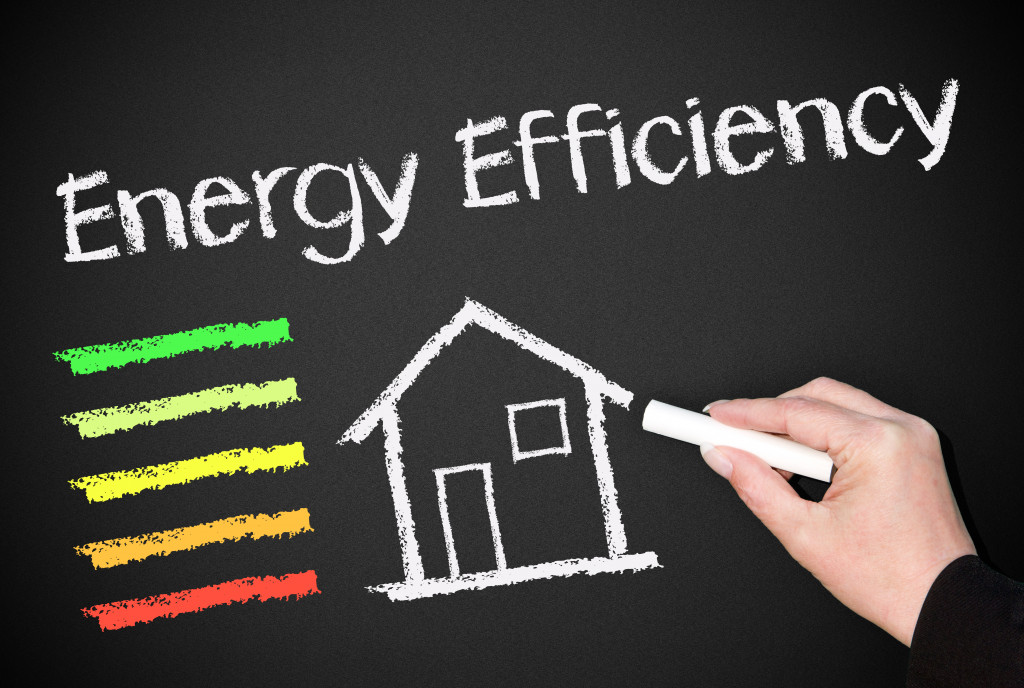- Calculate your energy use to identify areas of improvement.
- Promote employee awareness and engagement in energy efficiency efforts.
- Invest in energy-efficient equipment such as heating and cooling systems, lighting, office equipment and appliances.
- Implement automation systems for greater control over energy consumption.
- Educate customers about energy efficiency and promote sustainable behavior.
As a savvy business owner, you always search for ways to be more efficient and save money. One area where you can make a significant impact is by making your business more energy-efficient. Not only can this help you save money on energy bills, but it can also reduce your environmental impact and improve your reputation with customers. This guide will share five tips to make your business more energy-efficient.
1. Calculate Your Energy Use
The first step in making your business more energy-efficient is understanding how much energy you currently use. This can help you identify areas where you can make changes and set goals for reducing your energy consumption.
You can review your energy bills and use an online energy calculator to calculate your energy use. Consider tracking your energy use over time to monitor your progress and identify any areas where you need to make additional changes.
2. Promote Employee Awareness and Engagement
Your employees can play a key role in making your business more energy-efficient. By promoting awareness and engagement, you can help your employees understand the importance of energy efficiency and encourage them to change their behavior.
To promote employee awareness and engagement, consider implementing a training program or hosting a workshop on energy efficiency. Encourage employees to suggest ideas for reducing energy use and recognize and reward employees who take steps to improve energy efficiency.
3. Invest in Energy-Efficient Equipment
Investing in energy-efficient equipment can help you reduce energy use and save money on energy bills. Look for equipment with an ENERGY STAR rating, signifying it meets the stringent energy efficiency standards established by the U.S. Environmental Protection Agency (EPA).
Consider replacing outdated equipment, such as light fixtures or HVAC systems, with newer, more efficient models. You may also be eligible for rebates or incentives from your utility company for purchasing energy-efficient equipment.
Here is some energy-efficient equipment to invest in for your workplace:
Heating and Cooling Systems
Another key element to consider when making your business more energy-efficient is investing in heating and cooling systems designed to maximize efficiency. Installing a high-quality and affordable chiller hire can be a great way to reduce energy use while still keeping the temperature comfortable in your office or workspace. Doing so will also help you save on energy bills and reduce your environmental impact.
Lighting

Energy-efficient lighting is another great way to reduce energy costs while improving your workspace. Replacing traditional light bulbs with LED bulbs is an inexpensive way to reduce energy use and save money on your electricity bills. Additionally, installing motion-sensitive light switches and timers can help reduce energy use in areas that may not be used often.
Office Equipment
Look for ways to make your office equipment more energy efficient. Many computer monitors and printers now have ENERGY STAR ratings, which indicate that they meet higher energy efficiency standards set by the EPA. Additionally, look for multi-function devices such as all-in-one printers that can replace multiple pieces of equipment and save energy costs.
Appliances
Energy-efficient appliances can help you save money on electricity bills in addition to helping the environment by reducing your carbon footprint. Look for appliances with an ENERGY STAR rating which indicates a higher energy efficiency level than traditional models. Consider investing in efficient refrigerators, dishwashers, and washing machines. Additionally, look for Energy Star-rated water heaters that can help you reduce energy use by up to 20 percent.
Windows and Doors
Investing in new windows and doors with higher insulation values can help you reduce your energy costs. Look for Energy Star-rated products that use advanced technology to provide superior protection against air infiltration and heat loss, helping you keep your workspace at a comfortable temperature while saving money on energy bills. Additionally, consider investing in storm doors or window treatments such as blinds or drapes to reduce energy costs further. These simple investments will not only help you save money, but they’ll also make your business more comfortable and inviting for customers.
4. Implement Automation Systems

Implementing automation systems can help you reduce energy use and improve efficiency. For example, consider installing a programmable thermostat to automatically adjust heating and cooling based on occupancy or time of day.
You can also use automation to control lighting or turn off equipment when it is not in use. This can help you save energy and reduce your environmental impact.
5. Educate Customers About Energy Efficiency
As a business owner, you can also play a role in educating your customers about energy efficiency. Consider sharing information about your energy-saving efforts and encouraging customers to change their behavior.
For example, you could provide information about reducing energy use at home or offer incentives for customers who use reusable bags or bring their cups for coffee. Promoting energy efficiency to your customers can help create a more sustainable community.
Final Words
Making your business more energy-efficient requires effort and investment, but it can significantly benefit your bottom line and the environment. By calculating your energy use, promoting employee awareness and engagement, investing in energy-efficient equipment, implementing automation systems, and educating customers about energy efficiency, you can reduce your energy use and make a positive impact. Regularly assess your energy-saving strategies and adjust as needed to ensure ongoing success.




